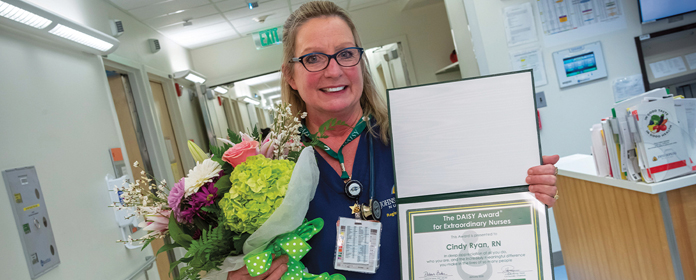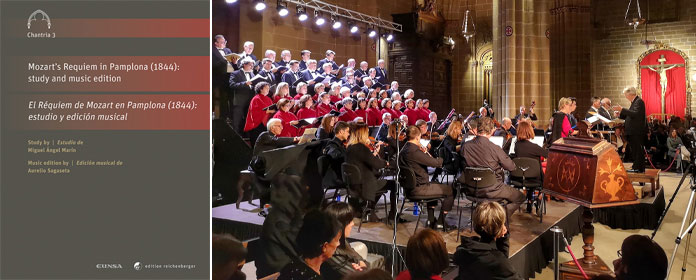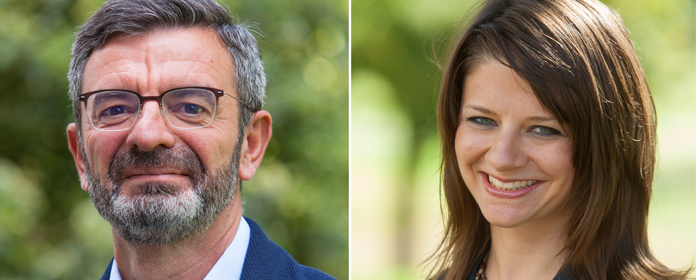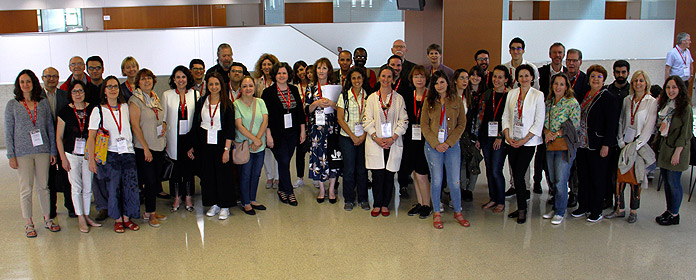“If scientific advances in healthcare reach citizens it is easer to convince them of the need to invest in medical research”
Antonio M. Bañón, professor at the University of Almería, spoke at the XVIII Congress of the Asociación Europea de Lenguas para Fines Específicos (European Association of Languages for Specific Purposes), hosted at the Institute for Culture and Society
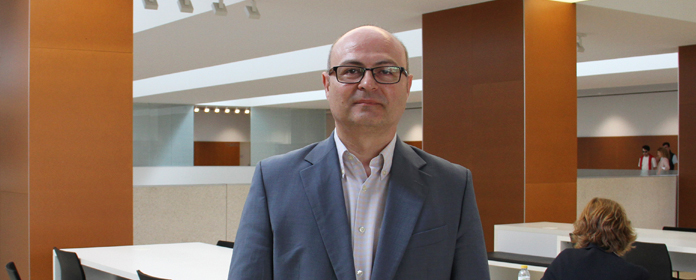
FOTO: Natalia Rouzaut
Antonio M. Bañón, professor at the University of Almería, was a keynote speaker at the XVIII Congress de la Asociación Europea de Lenguas para Fines Específicos (European Association of Languages for Specific Purposes). The meeting was organized by the humanities and social sciences research center of the University of Navarra, the Institute for Culture and Society, within its Public Discourse project.
Professor Bañón spoke about discourse analysis applied to the healthcare field. In his presentation, he gave an overview of studies on this issue, as well as practical guidelines that future linguistics research on discourse and health care should keep in mind.
-
In your presentation you commented that there are three levels when it comes to healthcare and discourse. What are they?
Discourse is a demonstration of health or illness, a tool for health or illness and is a manifestation of certain social constructions surrounding health and disease. The first level is probably the one that has been most worked on to date. Words can make you sick; studies have shown that many times depression has its origin in aggressive discourse and verbal violence. Words can also heal; psychotherapy is an important example of how conversation and listening can help. With respect to the third level, concepts such as “metabolically healthy obesity” and “pre-illness” are appearing and they demonstrate that health and illness are currently under reflection, and being constituted and reconstituted.
-
What are the most common health messages in the public sphere?
We could start with the fact that knowledge has improved immensely, but often only from a quantitative point of view. For example, we think that having an app related to healthon our phones ensures that we are taking care of ourselves, which is of course not true. We are evolving, but, at the same time, there is a lot of confusion.
-
How have we improved?
Advertising is less aggressive than in the past and things like tobacco and alcohol are more regulated. We also have improved preventive discourse, which is gaining ground. Many schools are also teaching about proper assessment of what it means to be healthy.
Yet, we also think we know more about health than we really know. This is very clear in the case of rare diseases. We now hear about this concept more frequently, often in terms of public figures’ promises. However, if we dig deeper, true knowledge of what a rare disease is lacks, as does the ratio and the consequences… That kind of “schizophrenic” knowledge is an area in need of exploration.
-
The media is the prime source from which we receive messages about health. How do you assess that coverage in general?
The media’s goal regarding health should be literacy across society. How? In collaboration with other actors. That is why it is important to generate common spaces between journalists, researchers, doctors, nurses, etc. Another, complementary objective includes avoiding sensationalism, such that the media and its leaders are aware of the consequences that messages of this type can have on health and illness.
-
How can we defend ourselves fromsensational and/or misleading messages?
To simplify, there are two elements for discerning whether a message is acceptable or inappropriate and they include examining the source and timing. The message must come from a credible source. And if we hear that a treatment whose research has taken decades will be applied soon, something is off. Sometimes, the media misrepresents a realistic time frame because they are more concerned with diffusing innovation. By this, I do not mean that progress in medical research should not be transferred to society. It is important that progress not be isolated in the medical community; indeed, if scientific advances in healthcare reach citizens it is easer to convince them of the need to invest in medical research.
-
Apart from the media, "Doctor Google" gives us all the information we want about any pathology, health advice... How has our relationship with the doctor changed?
Some have failed to manage excessive information, whether sought out alone or from someone else, because it is a very difficult task. It does not depend on the degree of knowledge, but on the style with which you transmit it. It is a problem of form, of communication... If a doctor attends to someone who is very clear about what he has and what he wants, the relationship is complicated. It is quite another thing to be open to an exchange of views, a consultation, a reflection... Relevant scientific journals have addressed precisely the idea of the expert patient. Some publishers ask whether it is a dream or a nightmare. When the amount of knowledge with which we go to the doctor helps improve the information exchange that takes place in diagnosis and treatment, it is a dream, but it can become a nightmare if knowledge is mishandled.
-
In this sense, how can we improve upon doctor-patient communication?
Before, there were people who only went to the doctor for treatment. And there are still people who just want to know what they should take to get better; they aren’t looking for anything else. But others do demand more information. The problem is that some communities impose patient time limits. It is difficult to ask doctors to solve cases with relative speed and, at the same time, teach the people in front of them. If we make primary care professionals responsible in this regard, we could be overloading them. While their resources are also limited, hospitals do have the necessary infrastructure to host conferences... But health literacy is not just the responsibility of healthcare professionals: if there is no established area on a specific issue, patients should request or promote it.
-
What kind of training do healthcare professionals need to use these tools?
They have to ask for communication training. Unlike other countries, in Spain, few classes on this topic are offered in our curricula. Right now, only doctors with a certain sensibility request this kind of training, and some even initiate self-study on interesting topics like communication accommodation. This British sociolinguistic theory suggests getting to know the interlocutor and adjusting the message for improved comprehension. Age, training, and language are variables that must be taken into account. For example, when treating someone who is not fluent in the host language, the situation becomes even more difficult because linguistic, communicative ability must be added to the ability to inform.
-
To what extent does an effort to accommodate the message influence the healing process?
This has been studied thoroughly from the point of view of treatment compliance. Healthcare doesn’t really aim to establish a diagnosis and impose a treatment plan. Success is found when a patient follows the doctor's instructions, takes medication, goes to the reviews... When patients feel understood and doctors convince them that their recommendation is best, treatment compliance tends to take hold. Otherwise, we end up with a medical, social and even economic problem. If the patient does not heal, the situation is complicated and re-hospitalization is a possibility. Cultural aspects also must be taken into account (for example, when it comes to issues such as drawingblood).
-
How does current research approachall the different aspects of discourse and healthcare?
The time has come to start analyzing disease segments. From my point of view, the most complex challenge is to apply discourse analysis to rare diseases, which involve ignorance and often a lack of hope fora cure, not just palliative care... We need to generate a wider communication corpus on health concerning the three dimensions mentioned earlier. Compared to other countries, Spain still has a lot of research to do concerning technical medical language and the best strategies for disseminating it. Another challenge involves getting more involved in especially sensitive medical fields, such as palliative care. We must also get more involved in organ donation. Family members who agree to donate the organs of a loved one at their time of death should be interviewed, as should the people involved in live transplants. Getting to know the discourse, sensations, and under lying emotions involved could be very useful.

